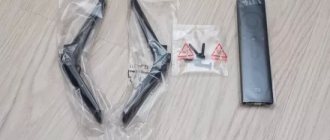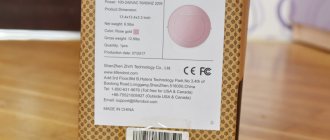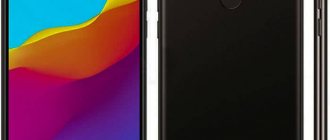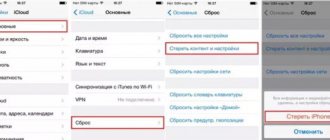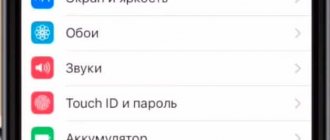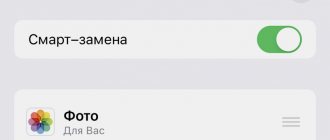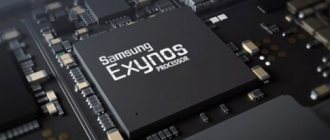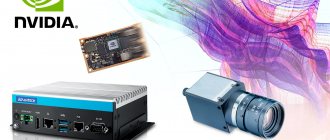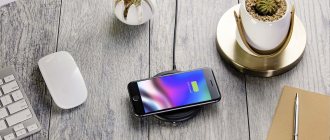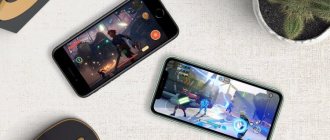iPhone SE 2 is here! But were we waiting for him?
Three years of waiting, thousands of rumors and leaks. And now it's finally here - the 2nd generation iPhone SE is out. Apple has released a smartphone that is surprisingly familiar in design and content, but still has significant innovations. We got to know the new iPhone SE closely and talked about it in detail.
Design. Finding differences
Well, let's get acquainted?
Stop though. These are painfully “familiar people.”
If you've ever held an iPhone 8, iPhone 7, iPhone 6s, or even an iPhone 6, then the new iPhone SE (2020) will be very familiar to you. Too familiar.
The 2nd generation iPhone SE has a traditional body shape with rounded corners and edges, large display frames, one of which houses a round Home button. The front and back surfaces are covered with protective glass - it is glossy .
Before the release of the 2nd generation iPhone SE, there were rumors that the model would differ from the G8 in having a matte back glass. Just like the iPhone 11 and iPhone 11 Pro . Alas, it didn’t work out. The back surface of the smartphone is glossy - it collects fingerprints and tactilely reminds you that it is the same glass as in the iPhone 8.
It's really a shame that the rear glass isn't frosted. The appearance of the smartphone would be transformed. But the main thing is that a completely different tactile sensation would appear.
The arrangement of the elements on the body has not changed in any way. And it would be illogical to expect this. The top is empty, the bottom is the Lightning connector and the speaker and microphone grilles, on the left side is the volume control unit, on the right is the power button and SIM card tray. Just for show: the smartphone does not have a 3.5 mm audio output .
What happens, nothing has changed at all? Let me reassure you, there are still some new details.
1. The Apple logo on the cover of the smartphone is shifted to the center, as in the iPhone 11 and iPhone 11 Pro . If you wear the new iPhone SE without a case, you will be able to show the whole world that you have a new product, and not just an “eight” (or “seven”, you can’t even tell in the case).
The logo was lowered simply to make the model consistent with current and future flagships. There was no other reason for this.
In the iPhone 11/11 Pro, the logo was shifted due to the fact that in its original place it would have been close to the enlarged camera block. The 2nd generation iPhone SE has a classic single camera - it does not interfere with the logo.
However, they lowered the logo and lowered it. Let it be in the center - thus making the new iPhone SE stand out from the crowd.
One last point about the logo, I promise. If you had an iPhone 7 or iPhone 8 case with a round apple cutout, it won't fit on the 2nd generation iPhone SE. The cover itself will fit, but the coveted apple will not be visible.
Or maybe it was to make money on new cases that all these movements were started?
2. The second change in the design is the colors of the case . iPhone SE 2nd generation came in three colors: black, white and red. With the iPhone 8, the new smartphone has only one color in common - red, the rest are different.
The black and white colors of the smartphone’s body look cool, there’s nothing to complain about. Apple made a bet on the classics and was definitely right.
Interesting point . The new iPhone SE 2nd generation in all colors has a black front panel. Even the model in white. On the one hand, this is an advantageous contrast. On the other hand, it will seem to some (and it already seems - I saw the reviews) that this is a discrepancy.
Here everyone decides for himself. Personally, I liked all the colors of the smartphone and the black fronts with a bang.
Frames are black on all models
Why does the new iPhone SE have such an old design? The first reason is that Apple definitely had components from the iPhone 8 lying around, which were put into use to assemble the new smartphone.
The second reason is that the company wanted to release a budget smartphone by its standards. This condition did not allow him to obtain a modern design.
The last thing I want to notice about the design is the dimensions and weight. First of all, looking at them, it becomes clear that this is, in fact, a clone of the iPhone 8. Yes, the dimensions of the smartphones are identical - 138.4 × 67.3 × 7.3 mm .
I won’t find fault with the identical dimensions; I’d rather note that the new iPhone SE is a contender for the title of best compact smartphone of 2020 . Exactly. There are simply no smartphones of this size on the market, especially new ones. You can see for yourself, for example, by searching on the “Market” by dimensions. Spoiler: you won't find anything.
Of course, the new 4.7-inch iPhone SE is no match for the compactness of the original 4-inch iPhone SE. But it has every right to be considered compact in our time. Simply because smartphones with 6- and even 7-inch displays are coming at us, which are sometimes difficult to hold even with two hands.
Compared to them, the 4.7-inch iPhone SE 2nd generation is tiny.
To complete the picture, the weight of the smartphone is 148 g (you won’t be surprised, but the iPhone 8 weighs the same). For the target audience of the device, iPhone 5s/6/6s users, its weight will not be a revelation.
But if you pick up the new iPhone SE after using an iPhone X or any newer iPhone for a long time, the difference is immediate. The latest iPhone models have noticeably gained weight, which is best demonstrated by direct comparison.
Review of the second generation Apple iPhone SE (2020) smartphone
The release of the second generation iPhone SE was long-awaited and traditionally attracted a lot of attention, even despite the difficult situation in the world. On the other hand, the device caused a lot of skeptical reviews: they say there is only one camera, the design is outdated, and the price is high. We decided to study the new product as carefully as possible and figure out who might need it and why in 2020.
First, some general information. The second-generation iPhone SE replaced the outdated iPhone 8 in the Apple line. Thus, in the official online store, the most affordable iPhones now are SE (from 40 thousand rubles) and XR (from 50 thousand), followed by iPhone 11 (from 60 thousand). However, of course, iPhone 8 and even iPhone 7 can still be purchased from official resellers. Thus, on the Svyaznoy network, the seventh model at the time of writing cost 33 thousand rubles for the version with a memory capacity of 128 GB (an iPhone SE with the same volume will cost 45 thousand), and a 64 GB iPhone 8 - 36 thousand, for only four thousands cheaper than the equivalent iPhone SE.
Consequently, the question arises: is it worth overpaying 4,000 rubles for a new product? And isn’t it worth throwing in another 10 thousand and getting the iPhone XR? Or maybe save quite radically and find a “seven” on sale?
Let's first look at the specifications of the iPhone SE.
Specifications of Apple iPhone SE second generation (2020)
- SoC Apple A13 Bionic (6 cores: 2 high-performance + 4 energy-efficient) + third-generation Neural Engine system
- Apple M13 motion coprocessor including barometer, accelerometer, gyroscope and compass
- Touch display 4.7″, IPS, 1334×750, 326 ppi, capacitive, multi-touch
- RAM 2.88 GB (according to Geekbench 5)
- Flash memory 64/128/256 GB
- No memory card support
- Cellular: UMTS/HSPA/HSPA+/DC-HSDPA (850, 900, 1700/2100, 1900, 2100 MHz); GSM/EDGE (850, 900, 1800, 1900 MHz), LTE Bands 1, 2, 3, 4, 5, 7, 8, 12, 13, 17, 18, 19, 20, 25, 26, 27, 28, 29, 30, 38, 39, 40, 41, Gigabit LTE support
- Wi-Fi 802.11b/g/n/ac/ac/ax (2.4 and 5 GHz; MIMO support)
- Bluetooth 5.0, A2DP, LE
- NFC (Apple Pay only)
- GPS with A-GPS, Glonass, Galileo and QZSS
- Universal Lightning Connector
- Cameras: front (7 MP, video with cinematic image stabilization 1080p 30 fps) and rear with one lens (12 MP, video shooting 4K 60 fps with optical image stabilization)
- TouchID fingerprint scanner
- Lithium polymer battery, non-removable (capacity not disclosed, but said to be identical to iPhone

- Supports Qi wireless charging
- Dimensions 138×67×7.3 mm
- Weight 148 g
- IP67 protection
- Operating system iOS 13
| Retail offers of Apple iPhone SE second generation (64 GB) | find out the price |
| Retail offers of Apple iPhone SE second generation (128 GB) | find out the price |
| Retail offers of Apple iPhone SE second generation (256 GB) | find out the price |
And here is a traditional comparison of the characteristics of the new product with other Apple smartphones - iPhone 7, 8 and XR. We will not take into account the first SE, since it has not been on sale for a long time.
| Apple iPhone SE second generation | Apple iPhone 8 | Apple iPhone 7 | Apple iPhone XR | |
| Screen | 4.7″, IPS, 1334×750, 326 ppi | 4.7″, IPS, 1334×750, 326 ppi | 4.7″, IPS, 1334×750, 326 ppi | 6.1″, IPS, 1792×828, 326 ppi |
| SoC (processor) | Apple A13 Bionic (6 cores) + Third generation Neural Engine | Apple A11 Bionic (6 cores) + First generation Neural Engine | Apple A10 Fusion (4 cores) | Apple A12 Bionic (6 cores) + Second generation Neural Engine |
| Flash memory | 64/128/256 GB | 64/256 GB | 32/128 | 64/128/256 GB |
| Connection | Gigabit LTE, Wi-Fi 802.11ax (Wi-Fi 6) | LTE Advanced, Wi-Fi 802.11ac | LTE Advanced, Wi-Fi 802.11ac | Gigabit LTE, Wi-Fi 802.11ac |
| Rear cameras | 12 MP; video 4K 60 fps | 12 MP; video 4K 60 fps | 12 MP; video 4K 30 fps | 12 MP; video 4K 60 fps |
| Front-camera | 7 MP; video 1080p 30 fps | 7 MP; video 1080p 30 fps | 7 MP; video 1080p 30 fps | 7 MP; video 1080p 30 fps, FaceID facial recognition |
| Housing protection | IP67 (water and dust protection) | IP67 (water and dust protection) | IP67 (water and dust protection) | IP68 (increased protection against water and dust) |
| Battery capacity (mAh) | 1821 | 1821 | 1960 | 2716 |
| Fast charging/Qi wireless charging | Yes Yes | no Yes | no no | Yes Yes |
| Dimensions (mm) | 138×67×7,3 | 138×67×7,3 | 138×67×7,1 | 151×76×8,3 |
| Weight (g) | 188 / 226 | 174 / 208 | 194 | 194 |
So what can we say about this comparison? The iPhone SE's strengths are the newest SoC and support for Wi-Fi 6; the iPhone XR's strengths are its screen and battery capacity (however, the latter in itself does not mean longer work, since it is “eaten up” by the larger screen). In addition, both gadgets support Qi wireless charging and fast charging technology; iPhone 7 and 8 are inferior to newer devices in these parameters, and differ from each other primarily in SoC and memory capacity. But in terms of cameras, all four devices are almost the same. Plus, they all support iOS 13.
Packaging and equipment
The iPhone SE box is made in the same style as other current Apple smartphones: the device is shown “facing” the user. Whereas the back sides of the iPhone 7 and 8 are shown on the boxes.
The iPhone SE package is no different from other current iPhones: a 5 V 1 A power supply, a Lightning cable, EarPods with a Lightning connector, and a set of leaflets. Since we had a red version - from the (Product)Red series, in the package we also found a red leaflet informing about the meaning of this charity event.
As with the iPhone 11 and iPhone XR, Apple did not include a high-power charger; only the Pro models have one, although the iPhone SE also supports fast charging. But this was not expected. But the headphone adapter with a 3.5 mm mini-jack, which the iPhone 8 had, could have been used.
Design
If the body of the first iPhone SE was almost identical to the iPhone 5, then the new product borrows the design from the iPhone 8, which, in turn, previously appeared in the iPhone 6 / 6s / 7. By today's standards, it looks, of course, somewhat outdated. On the other hand, it can well be called a “classic”. After all, many people still prefer a fingerprint scanner to facial recognition.
Glass front and back, rounded edges, a “virtual” Home button with the Taptic Engine haptic response function, no headphone jack and a protruding rear camera eye - everything is like in the iPhone 8.
The dimensions have not changed even a millimeter. In general, this is the same case, so we will not describe it in detail. Let us only note that in modern times a 4.7″ screen is, of course, very small. Although, again, someone missed exactly this form factor.
We will not describe the design in detail, since there is nothing new here. We only note that the new product is available in colors other than the iPhone 8: black, white and (Product) Red. We were able to evaluate the latter live, and it makes the most pleasant impression. The color is saturated, moderately bright (not flashy, not acidic), and it is red, and not raspberry or some other color.
Screen
iPhone SE has an IPS screen with a diagonal of 4.7″ and a resolution of 1334×750, which gives a pixel density of only 326 ppi. By today's standards, both the resolution and the diagonal are very low. However, as we know, the quality of the display is determined not only by these parameters. We decided to test the display of the new product to the fullest extent of our methodology.
The front surface of the screen is made in the form of a glass plate with a mirror-smooth surface that is scratch-resistant. Judging by the reflection of objects, the anti-glare properties of the screen are better than those of the Google Nexus 7 (2013) screen (hereinafter simply Nexus 7). For clarity, here is a photograph in which a white surface is reflected when the screens are turned off (on the left is Nexus 7, on the right is Apple iPhone SE, then they can be distinguished by size):
The screen of the Apple iPhone SE is noticeably darker (brightness according to photographs is 100 versus 110 for the Nexus 7). The ghosting of reflected objects in the Apple iPhone SE screen is very weak, this indicates that there is no air gap between the layers of the screen (more specifically, between the outer glass and the surface of the matrix). Due to the smaller number of boundaries (glass/air type) with very different refractive indices, such screens look better in conditions of intense external illumination, but their repair in the case of cracked external glass is much more expensive, since the entire screen has to be replaced. There is a special oleophobic (grease-repellent) coating on the outer surface of the screen (about the same efficiency as the Nexus 7), so fingerprints are removed much more easily and appear at a lower speed than with regular glass.
With manual brightness control and when the white field was displayed in full screen, the maximum brightness value was about 670 cd/m², the minimum was 2.7 cd/m². The maximum brightness is very high, and, given the excellent anti-glare properties, screen readability even on a sunny day outdoors will be at a good level. In complete darkness, the brightness can be reduced to a comfortable value. There is automatic brightness adjustment based on the light sensor (it is located above the front speaker grille), which is turned on by default. In automatic mode, as external lighting conditions change, the screen brightness both increases and decreases. The operation of this function depends on the position of the brightness adjustment slider: with it the user sets the desired brightness level for the current conditions. If you don’t change anything, then in complete darkness the brightness drops to 2.8 cd/m² (a little dark), in an office illuminated by artificial light (about 550 lux) the screen brightness is set to 130-200 cd/m² (normal), in very bright environment (corresponds to lighting on a clear day outdoors, but without direct sunlight - 20,000 lux or a little more) rises to 670 cd/m² (to the maximum, as needed). We were not entirely satisfied with the result, so in the dark we slightly moved the brightness slider up (in the quick access menu) and for the three conditions mentioned above we got 12, 170-200 and 670 cd/m² (ideal). It turns out that the auto-brightness function works adequately, and it is possible to adjust the nature of the brightness change to suit the user's requirements. At any brightness level, there is no significant backlight modulation, so there is no screen flicker.
This smartphone uses an IPS matrix. The microphotographs show a typical IPS subpixel structure:
For comparison, you can see the gallery of microphotographs of screens used in mobile technology.
The screen has good viewing angles without significant color shift even with large viewing deviations from perpendicular to the screen and without inverting shades. For comparison, here are photographs in which identical images are displayed on the screens of the Apple iPhone SE and the second comparison participant, while the brightness of the screens is initially set to approximately 200 cd/m², and the color balance on the camera is forced to switch to 6500 K.
White field:
Note the good uniformity of brightness and color tone of the white field.
And a test picture:
Color balance varies slightly, color saturation is normal. Let us remind you that the photograph cannot serve as a reliable source of information about the quality of color rendering and is provided only for conditional visual illustration. The reason is that the spectral sensitivity of the camera sensor does not exactly match this characteristic of human vision.
Now at an angle of approximately 45 degrees to the plane and to the side of the screen.
It can be seen that the colors did not change much on both screens and the contrast remained at a high level. White field:
The brightness at an angle of the screens decreased (by at least 4 times, based on the difference in shutter speed), but in the case of the Apple iPhone SE the drop in brightness is less. When deviated diagonally, the black field brightens to an average degree (slightly more than that of the Nexus 7) and acquires a purple tint. The photographs below demonstrate this (the brightness of the white areas in the direction perpendicular to the plane of the screens is approximately the same!):
And from another angle:
When viewed perpendicularly, the uniformity of the black field is excellent:
The contrast (approximately in the center of the screen) is high - about 1500:1. The black-white-black response time is 25 ms (12.5 ms on + 12.5 ms off). The transition between halftones of gray 25% and 75% (based on the numerical value of the color) and back takes a total of 41 ms. The gamma curve, constructed using 32 points with equal intervals based on the numerical value of the shade of gray, did not reveal any blockage in either the highlights or the shadows. The exponent of the approximating power function is 2.27, which is slightly higher than the standard value of 2.2. In this case, the real gamma curve deviates little from the power-law dependence:
Color gamut is sRGB:
Let's look at the spectra:
The components are well separated, allowing a wide color gamut to be achieved. However, in this case, the color gamut is carefully adjusted to the sRGB boundaries. As a result, visually the colors have a natural saturation.
This applies to those images that have an sRGB profile or no profile at all. However, today's top-end Apple devices are native to the Display P3 color space, with slightly richer greens and reds. The Display P3 space is based on SMPTE DCI-P3, but has a D65 white point and a gamma curve of approximately 2.2. In addition, the manufacturer states that starting with iOS 9.3, color management is supported at the system level, which makes it easier for iOS applications to correctly display images with a specified color profile. Indeed, by supplementing the test images (JPG and PNG files) with the Display P3 profile, we obtained a color gamut wider than sRGB (output in Safari):
Note that the coordinates of the primary colors coincide almost exactly with those specified for the DCI-P3 standard. Let's look at the spectra in the case of test images with the Display P3 profile:
It can be seen that in this case there is practically no software cross-mixing of components, that is, the native color space for the Apple iPhone SE screen is equal to Display P3.
The balance of shades on the gray scale is good, since the color temperature is not much higher than the standard 6500 K, and the deviation from the blackbody spectrum (ΔE) is less than 10, which is considered an acceptable indicator for a consumer device. At the same time, color temperature and ΔE change little from hue to hue - this has a positive effect on the visual assessment of color balance. (The darkest areas of the gray scale can be ignored, since color balance there is not very important, and the error in measuring color characteristics at low brightness is large.)
This Apple device has a function Night Shift , which makes the picture warmer at night (how much warmer is indicated by the user; the actual range is from 6330 K to 2800 K). For a description of why such a correction can be useful, see the article about the iPad Pro 9.7″. In any case, when having fun with a tablet or smartphone at night, it is better to reduce the screen brightness to a comfortable level, and there is no point in yellowing the screen with the Night Shift setting.
True Tone function , which, if enabled, adjusts the color balance to environmental conditions. For example, we activated it and placed the smartphone under LED lamps with cool white light, resulting in values of 4.4 for ΔE and 6940 K for color temperature. Under a halogen incandescent lamp (warm light) - 4.0 and 6100 K, respectively, that is, the color temperature has become lower, and the balance has become closer to the black body radiation spectrum. The function works as expected, but the correction range is very narrow. Note that the current standard is to calibrate display devices to a white point of 6500 K, but in principle, correction to the color temperature of external light can be useful if you want to achieve a better match between the image on the screen and what is visible on paper (or any other media). , on which colors are formed due to the reflection of incident light) under current conditions.
In terms of frame output, the quality of playback of video files on the device screen is very good, since frames (or groups of frames) can be stably output with uniform intervals and without frame drops, up to 4K files at 60 fps. The brightness range displayed on the screen corresponds to the actual brightness range for the given video file. Note that this smartphone has support for hardware decoding of H.265 files with a color depth of 10 bits per color, while gradients are output to the screen with better quality than in the case of 8-bit files. However, this is not proof of 10-bit output. Display of HDR files (HDR10, HEVC) is also supported.
Let's summarize. The screen has a very high maximum brightness (670 cd/m²) and has excellent anti-glare properties, so the device can be used outdoors without any problems, even on a sunny summer day. In complete darkness, the brightness can be reduced to a comfortable level (up to 2.7 cd/m²). It is also possible to use a mode with automatic brightness adjustment, which works adequately. The advantages of the screen include an effective oleophobic coating, the absence of an air gap in the layers of the screen and flicker, good black stability to deviation of the gaze from perpendicular to the screen plane, excellent uniformity of the black field, high contrast (1500:1), as well as support for the sRGB color gamut ( with the participation of the OS) and good color balance. There are no significant shortcomings. The screen quality is very high.
Performance
This is perhaps the most interesting part of our testing. After all, performance is the iPhone SE's strong point. This is clear from the characteristics, but we need to figure out, firstly, whether it is weaker than the iPhone 11 with a similar SoC, and secondly, how superior it is to the iPhone 8, iPhone 7 and iPhone XR. Let's make a reservation that we did not have the iPhone 8 and iPhone XR in our hands at the time of testing the iPhone SE, so we included in the table the results from the tests that were carried out at the time of the release of these devices, so the iOS version there is 11th and 12th respectively. But on other gadgets, including the iPhone 7, we had the latest iOS 13.
Let's start with browser benchmarks: SunSpider 1.0.2, Octane Benchmark, Kraken Benchmark and JetStream first (for older devices) and second versions. Everywhere the result was rounded to the nearest whole number. We used the Safari browser on all smartphones.
| Apple iPhone SE 2020 (Apple A13) | Apple iPhone 8 (Apple A11) | Apple iPhone 7 (Apple A10) | Apple iPhone 11 (Apple A13) | Apple iPhone XR (Apple A12) | |
| SunSpider 1.0.2 (ms, less is better) | 103 | 151 | 177 | 104 | 115 |
| Kraken Benchmark 1.1 (ms, lower is better) | 616 | 715 | 1941 | 588 | 620 |
| Octane 2.0 (points, more is better) | 47703 | 35170 | 28123 | 47626 | 42830 |
| JetStream 1 / 2 (points, more is better) | — / 139 | 224 / — | 162 / 74 | 250 / 124 | 237 / — |
Well, the new product not only overtook the iPhone XR and older models, which is natural, but was even slightly ahead of the iPhone 11. True, the difference is insignificant, and the screen resolution (which is higher in the iPhone 11) should not be written off. The iPhone SE has an “honest” flagship SoC. But it’s interesting to compare the iPhone SE with the iPhone 7: the current model outperformed the old one by almost twice in most tests. The difference with the iPhone 8 is also significant.
But in the comprehensive benchmarks AnTuTu and Geekbench, we will be able to compare only those devices that we tested on iOS 13, since we studied earlier models when the current versions of these benchmarks did not yet exist.
| Apple iPhone SE 2020 (Apple A13) | Apple iPhone 11 (Apple A13) | Apple iPhone 7 (Apple A10) | |
| AnTuTu (bigger is better) | 373631 | 454707 | 222912 |
| Geekbench 5 Single-Core Score (higher is better) | 1334 | 1333 | 771 |
| Geekbench 5 Multi-Core Score (bigger is better) | 2622 | 3501 | 1403 |
| Geekbench 5 Metal Score (higher is better) | 6363 | 6359 | 2769 |
The defeat in AnTuTu and Geekbench multi-core mode is difficult to explain. Maybe the iPhone SE 2020 has a reduced core frequency (at least in some boot configurations), so as, firstly, not to create unnecessary competitors for flagships, and secondly, to increase battery life. Anyway, we present these results as is. If we talk about comparison with the iPhone 7, which we retested simultaneously with the iPhone SE, the results of browser benchmarks were repeated here: on average, the difference is two times.
The last group of benchmarks is dedicated to testing GPU performance. We used 3DMark and Basemark Metal, created specifically for devices that support Metal technology. Unfortunately, GFXBenchmark Metal, which we used earlier, does not work correctly now.
All results are given in points.
| Apple iPhone SE 2020 (Apple A13) | Apple iPhone 8 (Apple A11) | Apple iPhone 7 (Apple A10) | Apple iPhone 11 (Apple A13) | Apple iPhone XR (Apple A12) | |
| 3DMark (Sling Shot Extreme mode) | 4038 | — | 2620 | 4168 | 3267 |
| 3DMark (Ice Storm Unlimited mode) | 97231 | 65001 | 37965 | — | — |
In principle, the situation is the same.
| Apple iPhone SE 2020 (Apple A13) | Apple iPhone 8 (Apple A11) | Apple iPhone 7 (Apple A10) | Apple iPhone 11 (Apple A13) | Apple iPhone XR (Apple A12) | |
| Basemark Metal Pro | 3475 | 1793 | 1754 | 3283 | 2666 |
Here, surprisingly, the iPhone 7 almost caught up with the iPhone 8, but we remind you that we tested the iPhone 7 on iOS 13, and the iPhone 8 on iOS 11. Perhaps the benchmark was optimized for the new OS. But the main thing is that the iPhone SE is again in the absolute lead (which, of course, in this case is almost certainly explained by its reduced screen resolution).
Based on the results of all tests, we can conclude that Apple has provided the iPhone SE with almost flagship performance. And compared to the iPhone 7, the new product is on average two times faster, and compared to the iPhone 8 - one and a half times faster. The iPhone XR is also behind, although not so significantly.
Cameras
The second-generation iPhone SE has a single rear camera, like the iPhone 8. And, apparently, the module is the same: 12 megapixels with an ƒ/1.8 aperture. But we were interested in comparing it with the top-end iPhone 11 Pro Max.
The camera, traditionally for Apple smartphones, has good sharpness in all areas, and the pictures have good detail. The work of noise reduction and sharpening is still noticeable, but only upon closer inspection. It would seem that there are no significant differences between the camera of the budget version and the top one, because the top version has three cameras. But this is only at first glance. The differences appear immediately when the lighting deteriorates: the new product does not have a night mode, although it would seem that there is no reason not to do so. As a result, the iPhone SE 2020 camera copes noticeably worse under exactly the same conditions than the iPhone 11 Pro Max camera, while it seems to deliberately raise the ISO higher and suppress noise more aggressively. But in good lighting, the cameras are practically indistinguishable.
Comparison pictures are shown below.
iPhone SE 2020:
iPhone 11 Pro Max:
When it comes to video shooting, we didn't find any significant differences between the quality of 4K videos on the main wide-angle camera of the iPhone 11 Pro Max and on the iPhone SE 2020. And this is great news for those who want to purchase a new product.
Autonomous operation and heating
In terms of battery life, the new iPhone SE corresponds to the iPhone 8. It couldn’t be otherwise: the size and resolution of the screen are identical, and so is the battery. Significant savings due to the new SoC are unlikely to be achieved, at least not in 3D gaming mode. In the case of real everyday use, you should expect about one day without charging. We tested the smartphone in Full HD YouTube video playback mode and got a result of about 10 hours. Quite normal.
Below is a thermal image of the back surface obtained after several runs in a row (about 10 minutes of work) of the Basemark Metal 3D test:
Heating is greater in the upper right part of the device, which apparently corresponds to the location of the SoC chip. According to the heat camera, the maximum heating was 44 degrees (at an ambient temperature of 24 degrees), which is higher than the average value in this test for modern smartphones.
conclusions
Considering the very small price difference with the iPhone 8, the new iPhone SE looks like a really attractive option: top-end performance, Wi-Fi 6, support for fast charging (relevant if you have a more powerful charger than the one included). These are strong enough arguments to overpay 4 thousand. But when compared with the iPhone 7, the decision is no longer so obvious: if performance as such is not an argument for you (for example, you do not play 3D games), then the second generation iPhone SE has practically no trump cards that can justify a very significant difference in cost . In addition, iOS 13 runs absolutely smoothly on the iPhone 7. Yes, iOS 15, when it comes out, you may not be able to install on it (although version 14, according to rumors, you will install). But for now you are unlikely to feel any discomfort.
The issue with the iPhone XR is even more difficult. On one side of the scale is the cost of the iPhone SE, which is 10 thousand lower, and slightly higher performance; on the other bowl there is a screen on the entire front panel and FaceID. You decide.
We would say that the second-generation iPhone SE is an excellent workhorse if you want to buy a device for a long time, at least three years. Then the performance reserve is justified even without a particular addiction to games, but all other qualities of the device are quite consistent with the requirements of today, provided that you consciously rely on a small display and do not chase fashion.
Let's talk about the good stuff. Processor - power
The main thing that the 2nd generation iPhone SE has is the flagship powerful A13 Bionic processor .
The six-core chip includes four energy-efficient Thunder clocked at 1.8 GHz and two high-performance Lightning clocked at 2.65 GHz. The number of transistors is off the charts - 8.5 billion .
3rd generation Neural Engine machine learning system . She is responsible for all artificial intelligence on the smartphone, including the department that processes and improves pictures. And this, you see, is more important than the “Siri Suggestions” function, which is also real thanks to the Neural Engine.
The key point is that the A13 Bionic processor is virtually unchanged from the same chip used in the iPhone 11 and iPhone 11 Pro.
What does "practically" mean? See for yourself.
In the Geekbench 5 benchmark, the new 2nd generation iPhone SE scored 1330 points in single-threaded mode and 3125 points in multi-threaded mode.
The iPhone 11 Pro did better: 1328 and 3414 points, respectively. In multi-threaded mode, the difference in performance was significant.
And it seems that this is not a jamb of the benchmark, which in theory could not be adapted for the new iPhone SE. Simply because the AnTuTu benchmark has a similar situation. The iPhone SE scored 492,166 points, while the iPhone 11 Pro scored 521,010 points.
This gives every reason to believe that Apple deliberately reduced the clock speed of the A13 Bionic processor in the new iPhone SE . For what? There may be several reasons. The two main ones lie on the surface.
- Apple has seen in practice that a smartphone with its small 4.7-inch screen does not need all the power of the A13 processor. To be fair, this power in the iPhone 11 Pro sometimes seems excessive, since even the most demanding applications and games load instantly.
- The second reason is more important. Apple could have underclocked the processor in the 2nd generation iPhone SE to improve its battery life. Limiting peak performance would definitely allow for optimal autonomy if the company was faced with such a task.
But don't worry about the "intentionally slow" iPhone SE. He's doing really well. iPhone SE 2nd generation is faster than most Android smartphones, including flagship ones . If we take into account only the Geekbench 5 indicators, which I personally trust more, then the iPhone SE is completely faster than all Android flagships. Including the latest smartphones from the Samsung Galaxy S20 line, which scored a maximum of 836 and 3101 points in Geekbench 5 tests.
But enough about parrots. What about the real speed of work? The results of the “live” test were as expected; after all, we have the most powerful mobile chip here.
iPhone SE 2nd generation instantly launches any application in any quantity. No matter how much I switched between applications, they did not close in the background and changing them took a split second.
The smartphone did not disappoint in games either. I tested the device in my favorite Oceanhorn 2 from Apple Arcade and the popular World of Tanks Blitz and Call of Duty: Mobile. Everywhere I turned the settings to maximum, without regret. And in all three cases I got what I expected - stable 60 frames per second , fast loading and no slowdowns. Even when the action in tanks and CoD began on the screen, there were no noticeable subsidences.
Playing games on the 4.7-inch screen of the new iPhone SE was quite normal. I didn’t experience any major inconveniences and thoroughly enjoyed the gameplay. However, from time to time the thought crept in that if the screen were larger and the frames were narrower, the quality of the gameplay would reach a new level.
I am sure that it is not for nothing that Apple separately advertises the Apple Arcade service on the page of the new iPhone SE on its website. These two are not exactly “made for each other,” but playing the best games on a smartphone will be comfortable – the performance is plenty .
I mentioned above that no matter how many applications I launched, they did not reload in the background. This is because the smartphone is equipped with 3 GB of RAM . This is another nice change from the iPhone 8, which only has 2GB of RAM.
Three gigabytes of RAM is enough for a smartphone, one might say. Applications remain stable in the background, photos and videos are processed instantly after shooting. However, one could not expect anything different in terms of photography. After all, the smartphone has only one camera.
Another important point related to performance. iPhone SE 2nd is a really powerful smartphone . And this means that it will be updated for a long time. Users have the right to expect updates for 6-7 years, no less. Otherwise, there will be claims against Apple.
In addition, this is a huge advantage of the new iPhone SE compared to Android smartphones, which often stop updating after a year or two.
Oh yes, the amount of internal memory on the iPhone SE is the usual - 64, 128 or 256 GB, depending on the configuration.
⇡#Camera
Perhaps the biggest compromise on the iPhone SE (2020) is the camera. Again, you can look back at the Google Pixel 3a, you can refer to the previous iPhone SE, compared to which there is obvious progress, but in general the tactic of starting from the laggards and ignoring the world around Apple products looks quite counterproductive. Let’s just state: the SE has a single camera from the 2020 model, and this solution can hardly be considered truly progressive.
The lens protruding slightly above the body has an aperture of ƒ/1.8 and a focal length equivalent to 28 mm, and a 12-megapixel sensor with an optical stabilizer and phase detection autofocus is hidden deeper. Next to it is a traditional iPhone flash with four True Tone LEDs. All improvements regarding the iPhone 8 relate exclusively to software.
| A couple of examples of night shooting on iPhone SE (2020) | ||
At the same time, I repeat, there is no support for Deep Fusion, despite the presence of a built-in AI accelerator. Everything is simpler: the iPhone SE (2020) camera can stitch HDR (Smart HDR, of course), and you cannot somehow control its actions - but you can turn it off, for which you will have to go into the general settings. Classic: the iPhone decides everything for you, the maximum allowed is to slightly correct the exposure. You can’t even focus manually, so that, for example, you can focus on the droplets on the glass and not what’s behind the glass. Shooting in RAW is also not supported.
But there is a portrait mode, despite the lack of a camera specifically designed for this. Its capabilities are limited due to the wide angle of the optics - you can’t really take close-ups, the spatial distortions are too great. But both in terms of background blur and in terms of effects (both light and the virtual aperture that can be changed after the fact), the iPhone SE (2020) is not much inferior to its multi-camera counterparts.
In general, in terms of shooting quality, the new iPhone SE manifests itself exactly as you would expect from it: pleasant color rendition, decent dynamic range and overall high image quality for scenes shot with good lighting, on the one hand, and on the other hand, poor shooting capabilities In the dark. I wouldn’t say that the SE can’t handle evening scenes at all - after all, there is an optical stabilizer here, and the “brains” somehow help cope with noise, but the situation is not the same with its competitors, who all have one or another multi-frame stitching system noticeably better. For users of the previous iPhone SE, the progress will be obvious, but for owners of the iPhone 8, for example, it will not be so much. I don’t even want to talk about the lack of zoom and widening of the viewing angle.
Gallery of pictures
View all images (28)
In terms of video, everything is not bad: Apple iPhone SE (2020) records 4K video at up to 60 frames per second, stabilization works at any resolution and at any frequency, HDR at up to 30 frames per second. The picture is smooth, clear, with a very smooth transition along the frame border, without rolling shutter. When it comes to video processing, the iPhone can still give almost all its Android competitors a run for their money. But again, there is no optical zoom, and slow motion is a maximum of 240 frames per second at Full HD resolution. However, it’s impossible to make a complaint about the new SE based on video - it’s a good modern level.
The front camera also came from the iPhone 8: 7 megapixels, ƒ/2.2, no autofocus, no flash. But again, there is a portrait mode with proprietary effects, and the image quality has improved somewhat since then - processing algorithms do not stand still.
Display. I saw him somewhere
Let's return to more stable things. iPhone SE 2nd generation features a 4.7-inch Retina HD LCD display with a resolution of 1334 x 750 pixels (326 pixels per inch). Brightness - 625 cd/m², contrast - 1400:1.
Well, did you notice? Yes, yes, this is exactly the same screen that is installed in the iPhone 8 . There is absolutely no difference between smartphone displays.
The 2nd generation iPhone SE screen also has a wide color gamut (P3), dual-domain pixels for a wider viewing angle, and support for True Tone technology.
The latter, in case you've forgotten, uses sensors in your smartphone to adjust colors and brightness depending on the lighting. True Tone adapts the screen to any conditions, making the image look “like on paper”. In general, this is a cool and useful, but long-familiar function. It debuted in the iPhone 8/8 Plus and iPhone X.
And, of course, the 2nd generation iPhone SE display has wide bezels. The top and bottom frames are especially wide. “Thanks to” them, the display occupies only 65.5% of the front surface of the screen - an indicator that is not so great. For comparison, the iPhone XR display, with its far from narrow bezels around the perimeter, spreads out over 80.2% of the front panel area.
With the display characteristics of the new iPhone SE, everything is very clear. With sensations, in principle, too. The smartphone has the best LCD display of any smartphone on the planet . The picture is bright, contrasty and rich. The detail is excellent. Viewing angles - space.
But the frames spoil the whole holiday - they hold back the display. If you pick up a smartphone after any “frameless” device, you will experience a slight attack of claustrophobia.
Interfaces, sensors and peripherals of iPhone SE 2 and iPhone 11
Both models received the same set of sensors: a three-axis gyroscope, accelerometer, barometer, proximity and light sensors. But while the iPhone SE 2's authentication security is provided by the Touch ID fingerprint sensor,
then in iPhone 11 this is achieved by more modern Face ID technology and facial recognition using the TrueDepth camera system.
Both smartphones support two SIM cards (one is nano-SIM and the other is eSIM). Both iPhone 11 and iPhone SE 2 received Bluetooth 5.0, NFC with reading mode, GPS/GLONASS, the ability to work with gigabit LTE and the latest implementation of Wi-Fi 6 (802.11ax).
There is no 3.5mm headphone audio jack on any of the models reviewed.
♥ON THE TOPIC: How to change the call melody (ringtone) on iPhone.
Battery. Very little mAh
The 2nd generation iPhone SE battery is another good friend of ours. The smartphone has the same battery as the iPhone 8. Its capacity is very modest by today's standards - 1821 mAh .
Does this make the battery life of the new iPhone SE and iPhone 8 identical? First, let's look at the data from Apple's website. It is very funny .
